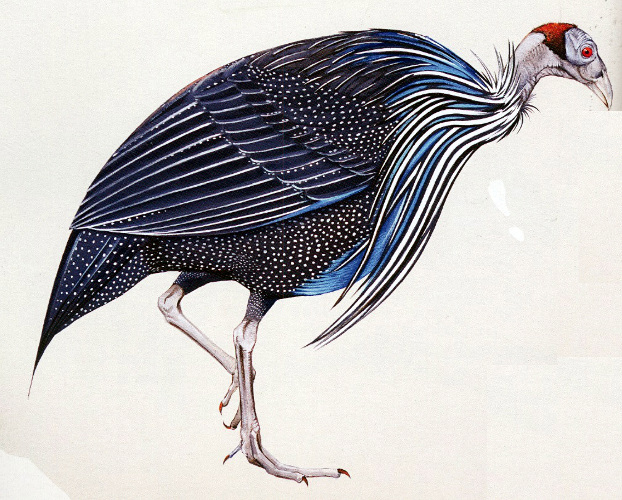

Title: |
The Wall of Birds |
 |
Authors: |
Jane Kim with Thayer Walker |
|
Category: |
Non-fiction |
|
Rating: |
||
Date Reviewed: |
January 29, 2022 |
The backdrop of the mural is a map of all the continents. The birds are painted on top of their home continent (there a few sea birds, like the albatross, that are painted out over the ocean). All of the birds are painted life size, so the mural must really be impressive. In addition to all the birds, there is a "staircase of evolution" which shows the predecessors to the modern birds. These extinct creatures were painted in grey scale, but also life size, including the 30' tall Yutyrabbys huali, which lived in the early Cretaceous period and is currently the largest feathered animal discovered so far. The latest scientific thinking is that feathers were initially a method for the proto-birds to regulate their temperature; feathers were used for insulation before they were used for flight. In addition to the beautiful artwork, Kim's book also contains some interesting bird facts. The spotted kiwi, in fact, is not actually spotted. The kick from an ostrich is powerful enough to crush the skull of a lion. The Southern Cassowary, a resident of Australia, is quite dangerous - it stands five feet tall, can weigh up to 100 pounds, run thirty miles per hour, and it sports 5 inch claws on its powerful legs that can disembowel any human rash enough to provoke it. ( Cassowary's eat a frugivorous diet - which was a new word to me. I had to look it up and learn that frugivorous means it eats fruit.) Australia was also home of the now extinct Dromornis stirtoni, which stood ten feet tall and weighed an incredible 1300 lbs. It is thought to have died out 30,000 years ago (about the time humans arrived on the Australian continent) and was the largest bird that ever existed. In Mozambique, a Red Faced Mousebird sits in trees to expose its belly to the warm sun. The sun's warmth aids the bacteria in its stomach to digest the leaves it eats. The secretary bird strides across Africa on long crane-like legs until it spots prey (secretary birds are famous for killing cobras). It then pounces on its target, delivering punishing fast blows with its clawed feet - striking up to six times per second! In addition to adding color, melanin in wings gives strength to feathers, which is why white birds like an albatross have black feathers on their heads and wingtips - the places where wind places the most stress on their feathers. On page 96, Kim shows the underpainting of the Imperial Cormorant. The next photo shows her painting feather detail over the under color. What is interesting is that Kim is painting with what looks like markers. Is there such a thing as a brush/pen? On page 97 is a picture of the finished Cormorant, an excellent piece of art. The last page of the book is a three page foldout showing the entire wall with finished mural. It would be nice to see that in person some day. This is an impressive book! I got The Wall of Birds One Planet | 243 Families | 375 million years out of the library because it I wanted to look at the wonderful artwork;, and I am so impressed that now I think I shall of purchase a copy for myself. I went to Jane Kim's website, inkdwell.com to see if she had other books available, but Wall of Birds is currently her only published book. There is an interesting project concerning migrating monarch butterflies shown on the site.
Spotted Kiwi
Vulturine Guineafowl
Snowy Sheathbill & Emperor Penguin
Toco Toucan & Collared Crescentchest, Chestnut-crowned Gnateater, Wrenthrush, Scarlet-banded Barbet |





